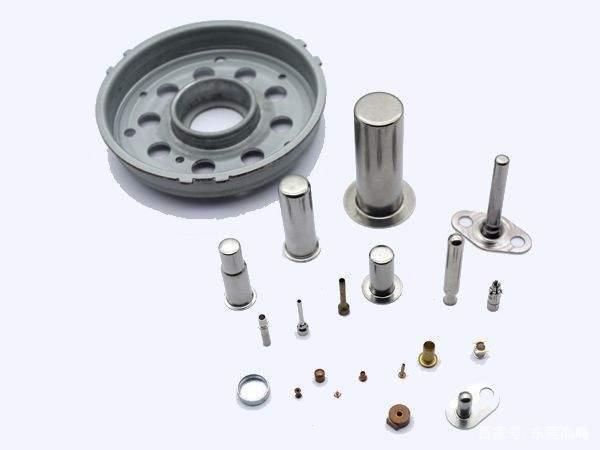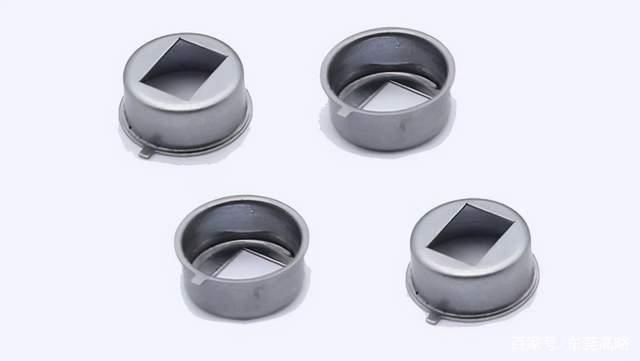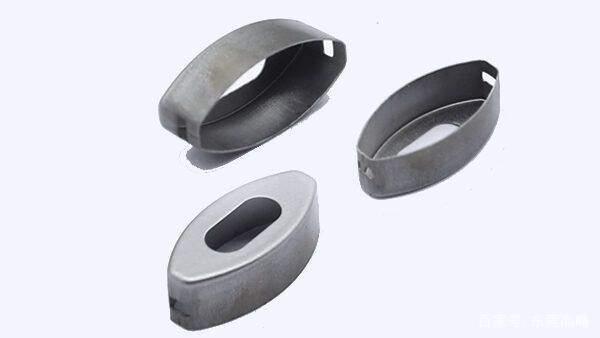Deep drawing is a sheet metal forming process that produces high dimensional accuracy and a smooth surface finish. Stamping is made by striking a sheet of metal with a die to form the desired shape. Stamped parts are generally less precise than deep drawn parts and have a rougher surface finish. The following information will help you decide whether deep drawing or stamping is more suitable for your needs.
The following points illustrate the difference between deep drawing and stamping.

The accuracy of a deep drawn part is measured by the thickness of the material and the radius of the interior corners. Deep drawing generally produces more precise parts than stamping. A high degree of dimensional accuracy can only be achieved with single-point deep drawing. The surface finish of stamped parts is always rougher than that of drawn parts, and the dimensional accuracy is lower.
Surface treatment
Deep-drawn parts generally have a smoother surface finish than stamped parts because there is only one deformation process during position manufacturing. Stamping requires two processes (forming and recessing) to produce the part, resulting in a more complex and rougher surface finish. An embossing process can be added to enhance the appearance of the formed sheet metal part. Still, it doesn't improve its structural properties, as it only increases the material thickness without changing shape or size. The embossing process does not provide structural support for the part.
Bending
Deep drawn parts are often formed using a two-piece bending system to create sharp bends. A single point extrusion die is the best type of deep drawing as it provides maximum dimensional accuracy and produces accurate bend angles. Stampings cannot create tight bends or angles suitable for many functional parts. However, some parts can be stamped into the desired shape and then transferred to another assembly jig, where they can be produced by bending, eliminating any additional operations while ensuring that quality remains high.
Cost of production
Deep drawing is more expensive than stamping equipment due to the need for two presses to operate. A main press is required for deep drawing and a second press for stamping. However, because deep-drawn parts are more precise than stamped parts, they require less post-processing work, resulting in lower costs due to reduced scrap and labor.
Material thickness

Design
When designing a part for deep drawing, designers must take into account the bending and stretching limitations of the sheet metal. These constraints need to be considered when determining wall thickness, corner radii, and other features to ensure the part can be successfully deep drawn. Complex parts with sharp bends are not suitable for deep drawing. Stamping does not have this limitation and can be used more freely regardless of the forming process.
Easy to manufacture
Parts for deep drawing can be produced quickly and easily on high-volume production lines. The process is simple and does not require extensive tool changes. Production of stamped parts is more challenging and often requires more setup time. This results in longer lead times and higher production costs.
Mass production
Deep drawing is more suitable for high productivity. This is a fast and cost-effective way to mass-produce in a short period of time. The embossing process also plays an important role in mass production as it allows better control over the surface finish of the molded part. Stamping is limited in mass production due to low speeds, which makes them less efficient in mass production.
Strength
Appearance
One of the disadvantages of deep drawing is that it can sometimes cause surface deformations such as wrinkles, stretching and tearing. While these distortions are not always visible, they can result in a less desirable appearance. Stamping produces a smooth surface without deformation. From a purely aesthetic point of view, this makes stampings more desirable.
Formability
Deep drawing is considered a formable process because it can easily deform sheet metal into complex shapes. Stamped parts are not as formable as deep drawn parts because the metal is not drawn, limiting its ability to deform into complex shapes. Parts that require deep drawing have higher formability than stamped parts.
Parts that require low weight and a high strength-to-weight ratio are better suited for deep drawing. The deep drawing process results in parts with thinner cross-sections than stamped parts without sacrificing mechanical properties. Parts that require corrosion resistance should also be produced using deep drawing, as this process produces a higher quality surface finish and dimensional accuracy. Stampings are not suitable for producing parts with a high strength-to-weight ratio and/or corrosion resistance.
Volume
Deep drawing is more suitable for high volume production, while stamping is the preferred method when the number of parts is small. This is because the cost of stamping is lower than that of deep drawing, and it is more suitable for small batch production. Deep drawing requires a lot of setup cost, but can be produced in large quantities quickly, so it is best suited for mass production. Stamping uses lower cost equipment and requires very little labor to produce many parts.
Material
Most deep drawn parts are made of steel, aluminum and copper alloys, while most stamped parts are made of mild steel or alloy steel. However, there is no hard and fast rule for this, and both processes can be used in a variety of materials to produce various components.
Form

The forming process of stamping parts is usually one step. By contrast, forming a deep drawn part can include many steps, including die design, material preparation, blanking, drawing, trimming, and inspection. This means that the machining time of stamped parts is shorter than that of deep-drawn parts, which can significantly reduce costs. Additionally, stamping requires less machine maintenance because it uses less force than deep drawing, reducing the operating costs of the process.
Post processing
Once produced, stamped parts can be used immediately as no additional processing is required, unlike deep drawn parts which require several post-processing operations including deburring, surface treatment and painting.
Lubricant
When parts are deep drawn, they may come into contact with lubricants and fluids. Therefore, materials that are resistant to these substances must be used. This can be achieved by hardening or coating the material or using less sensitive materials such as plastics and ceramics, as they do not react easily with water and other chemicals.
Summarize
Deep drawing is a metal forming process that uses punches and dies to draw metal into the desired shape. The stamping process uses points and anvils to deform the metal. The formability of stamped parts is not as good as that of deep-drawn parts, and it is limited in mass production. Deep-drawn elements are stronger than stamped parts because the metal is stretched during the deep-drawing process. Stamped parts are not as strong as deep drawn parts because they do not stretch the metal. Design features that require high formability are best suited for deep drawing. Deep-drawn parts generally cost more than stamped parts, but this cost is offset by their higher strength-to-weight ratio and corrosion resistance.
--------------------------------------------------------------------------------------END-----------------------------------------------------------------

